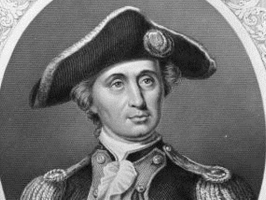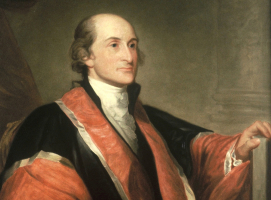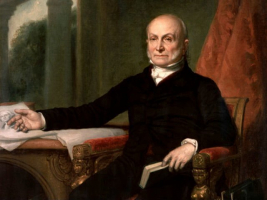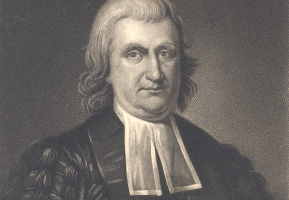Top 7 Interesting Facts about John Cabot
John Cabot was a famous explorer who was the first European to set foot on the North American mainland. He was the first to discover the New World, but he ... read more...landed on an island, not the North American continent. There are many interesting facts about John Cabot that you may not know, read this article for more information.
-
Since the time of the Vikings, John Cabot is said to have been the first European to visit North America and is an Italian adventurer and navigator. The first known European trip to the North American coast since the Norse visit to Vinland in the fifth century was his 1497 journey, which was ordered by King Henry VII of England eleven. Both the Canadian and British governments chose Cape Bonavista, Newfoundland, to symbolize the location of Cabot's initial landing on the occasion of the expedition's 500th anniversary. Alternative sites, though, have also been proposed.
It is unknown exactly when he was born. Funny enough, despite being born in Italy, John Cabot did not spend a lot of time there. He has relocated to several locations on earth, as you will learn later!
Actually, very little is known about Cabot's early life. He was most likely born in Italy around the year 1450, as is known. It is known that he acquired Venetian citizenship in 1476. He would later marry and have three sons. It is thought that his failure to pay his debts at home led him to decide to relocate when he was in his 40s, first to Spain and subsequently to England.

Photo: https://i.pinimg.com/ 
Photo: https://img.haikudeck.com/ -
One of the interesting facts about John Cabot is that in Venice, he became a merchant. Venice's prosperity was founded on trade, particularly with China and Japan in the Far East. Europeans were huge fans of spices and silks from the Far East. John Cabot turned become a trader in order to make money, and he went as far as Mecca, where products from the East and the West were exchanged. Here, he realized the wealth that might be attained by travelling to the Far East and picked up crucial skills like navigating, sailing, and map reading.
Cabot would be qualified to engage in marine trade, particularly trade to the eastern Mediterranean, the source of much of his income, once he attained full citizenship of Venice in 1476. Venice. Probably not long after, he started this deal. He is mentioned selling a Cretan slave in a 1483 document. At the time, the Sultanate of Egypt's domains covered the majority of what is now Israel, Syria, and Lebanon. This does not support Cabot's subsequent claim that he visited Mecca, which he made to the Milanese envoy in London in 1497. He may have learned more about the origins of the oriental commodities (such spices and silk) he would trade in this Mediterranean trade than most people.
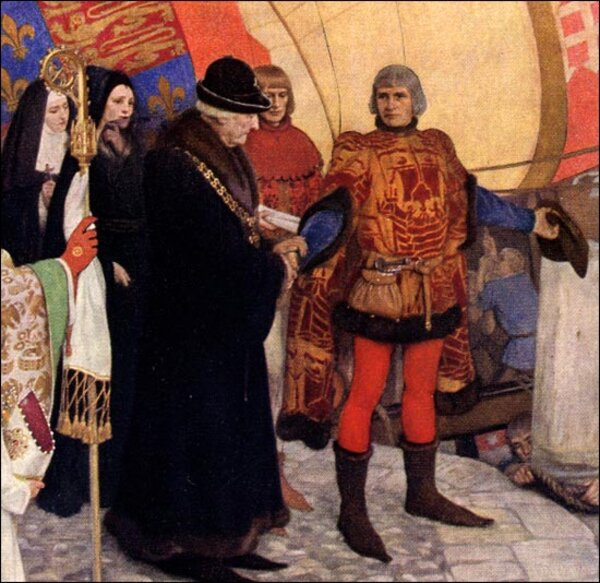
Photo: https://www.heritage.nf.ca/ Source: HistoryForEDU's Youtube Chanel -
John Cabot was unable to pay back his debt for reasons that aren't entirely clear. As his creditors tried to apprehend him, he ran away to several cities.
Cabot reportedly experienced financial difficulties in the late 1480s and left Venice on November 5, 1488, as an insolvent debtor. He relocated to Valencia, Spain, the location of his creditors. By submitting a letter of recommendation for justice to the relevant authorities, we attempted to have him arrested. "John Cabot Montecalunya" suggested ideas to enhance the berth while at Valencia. These ideas were, however, turned down. He relocated to Seville in early 1494, when he proposed, secured a construction contract for, and then worked on building a stone bridge over the Guadalquivircon in only five months. On December 24, 1494, the City Council decided to give up on this endeavor. The Cabot was able to reach England in the middle of 1495 after he reportedly looked for assistance in Seville and Lisbon for an Atlantic trip, before moving to London in quest of financial and political support.
The truth is that John Cabot eventually went into default on his debt after becoming a successful businessman in Venice, forcing him to leave the country. He had to work very hard to come up with a solution to pay his obligation, but he was still unable to do so. He also looked for political backing on other fronts.
Source: Ms. Renaud's Youtube Chanel 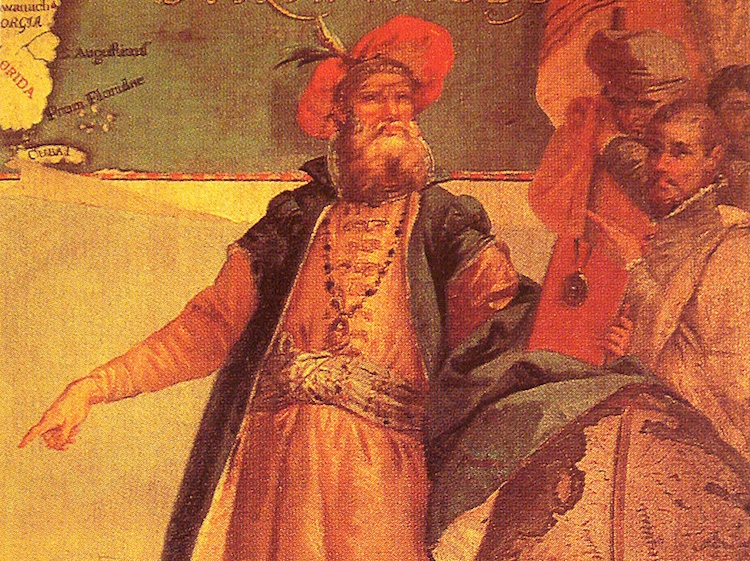
Photo: https://www.thehistorypress.co.uk/ -
According to historians, Cabot traveled to Bristol, a significant maritime hub, after landing in England to look for financial supporters. It is the only British city having a background in Atlantic Ocean exploration. All voyages were to depart from Bristol, according to Cabot's royal patent, which the Crown issued in 1496. This allowed his primary financial sponsors to be located in the city. It further mandates that any trade ensuing from a discovery must be handled only with England and that products may only enter through Bristol. Bristol would thereafter have the exclusive right to conduct colonial trade, making it a monopoly port. In making this clear, Henry VII of England was probably influenced by Iberian practices: Portugal had made Lisbon such an exclusive port, while Spain was doing the same with Seville.
He spent several years hopping from place to place until settling in Bristol, England. Bristol was the starting point for numerous excursions, and he wished to go west. It makes reasonable that he would search in Bristol for sponsors. At that time, word began to get around Europe that Columbus had found the New World by sailing west. They believe Columbus found the northern region of Asia, not a whole new continent. In an effort to convince the monarch that England was also capable of reaching Asia, John Cabot suggested a path that would take them farther north than Christopher Columbus had traveled.

Photo: https://d2692c.medialib.edu.glogster.com/ 
Photo: https://l450v.alamy.com/ -
One of the interesting facts about John Cabot is that his first trip failed because he didn't plan it perfectly. But not because of this failure that he gave up or did not plan for the next trip. John Cabot boarded a ship, and the journey had not been carefully planned. John Cabot had to return to England because of water shortages, disobedient sailors, and terrible weather.
Cabot traveled to Bristol to make travel preparations. The second-largest seaport in the UK is Bristol. It sponsored multiple journeys in pursuit of the fabled Hy-Brasil beginning in 1480. The island is said to be somewhere in the Atlantic Ocean, according to Celtic mythology. The Bristol men were said to have found the island a day earlier but had since lost sight of it, according to port merchants. Ruddock claims in a confidential letter to a coworker (Quinn) that she has obtained proof in the Italian records that the Bristol men reached North America before 1470. Merchants had a financial motive to look for the island because it was thought to be the source of Brazilian wood (from which a rich red dye could be made).

Photo: https://2.bp.blogspot.com/ 
Photo: https://www.heritage.nf.ca/ -
John Cabot soon attempted again with a ship called Matthew following his initial failure. He arrived in North America after a journey that lasted more than a month. There are many locations vying for this distinction, and the precise site is unknown. Why? because they can draw visitors to their location historians state Labrador or Newfoundland. There is a lot of information on Cabot's second voyage in John Day's letter from the winter of 1497–1498. Day is reported to have known the expedition's major players and was able to report on it because of this. Columbus would likely have considered that these journeys challenged his monopoly for his discovery of the west if the territories Cabot had explored were west of the meridian as agreed in the Treaty of Tordesillas, or if he had intended to sail further west.
The mission departed Bristol and traveled across Ireland and the Atlantic Ocean before landing on a North American shore on June 24, 1497. Different localities have vied for the title of being the landing's actual location for a very long time. According to historians, possible locations include Cape Bonavista and St. John's in Newfoundland, Cape Breton Island in Nova Scotia, Labrador, and Maine. It appears likely that the first landing was in Newfoundland or adjacent Cape Breton Island since the discovery of John Day's letter in the 1950s. This is due to Day's letter's suggestion that the coastline seen in 1497 is somewhere between Bordeaux, France, and Dursey Head, Ireland, in terms of latitude. The expedition returned home after reaching northern latitudes, suggesting that the initial landing occurred close to southern latitudes.
During the trip, Cabot is claimed to have only made one landing. The crew only appears to have been on land long enough to receive fresh water, fly the flags of Venice and the Pope, claiming the territory for the King of England, and acknowledge the power of the Roman Catholic Church as their ecclesiastical leader. Cabot spent a few weeks "exploring" the coast after this landing, with the majority being "discovered after returning."

Photo: Photo: https://i.pinimg.com/ 
Photo: https://storage.googleapis.com/ -
John Cabot was honored by the King after his return from North America, who also handed him a sizable quantity of money. Cabot had to get additional directives from the king after Bristol customs officials originally refused to pay his pension despite the royal subsidy. Cabot invented new letters for the journey and to aid him in getting ready for his second expedition on February 3, 1498. Lancelot Thirkill of London, Thomas Bradley, and John Cair, who had accompanied Cabot's new expedition, also received loans from the king in the months of March and April.
Early in May 1498, according to The Great Chronicle of London (1189–1512), Cabot sailed from Bristol in a fleet of five ships, one of which the king had prepared. It was said that some of the ships carried goods, including clothing, hats, lace, and other "small" items. This implies that Cabot planned to conduct business while on this journey. In July, the Spanish embassy in London reported that the Cabot and four other ships continued on while one of the ships had been struck by a storm and was forced to dock in Ireland.
It is thought that Cabot and his fleet never returned, and only one ship did so with significant damage. No more records about this mission have been discovered (or at least published) for centuries. It is assumed that he perished after running into a violent storm.

Photo: https://guyberube.com/ 
Photo: https://i.pinimg.com/















